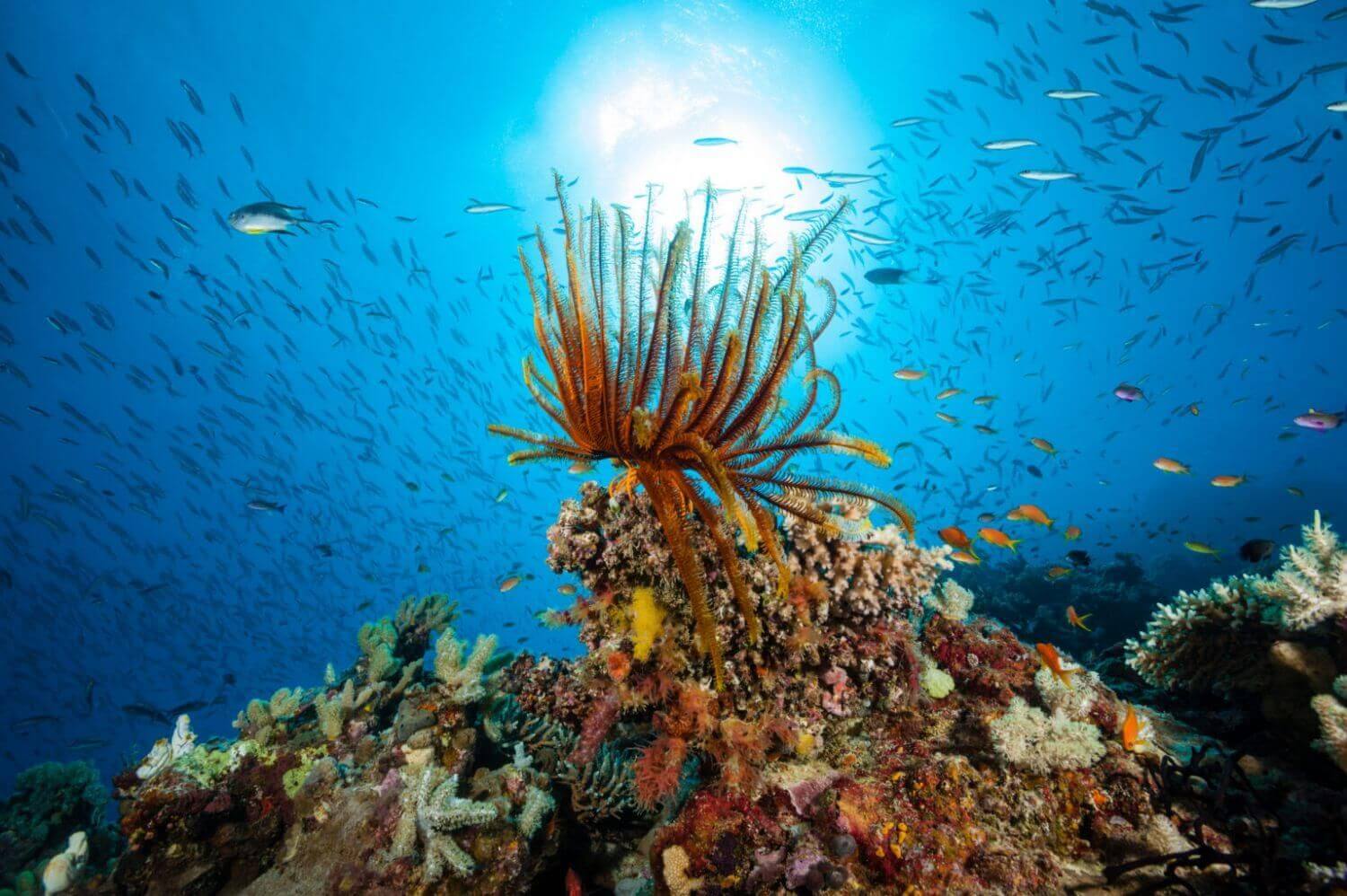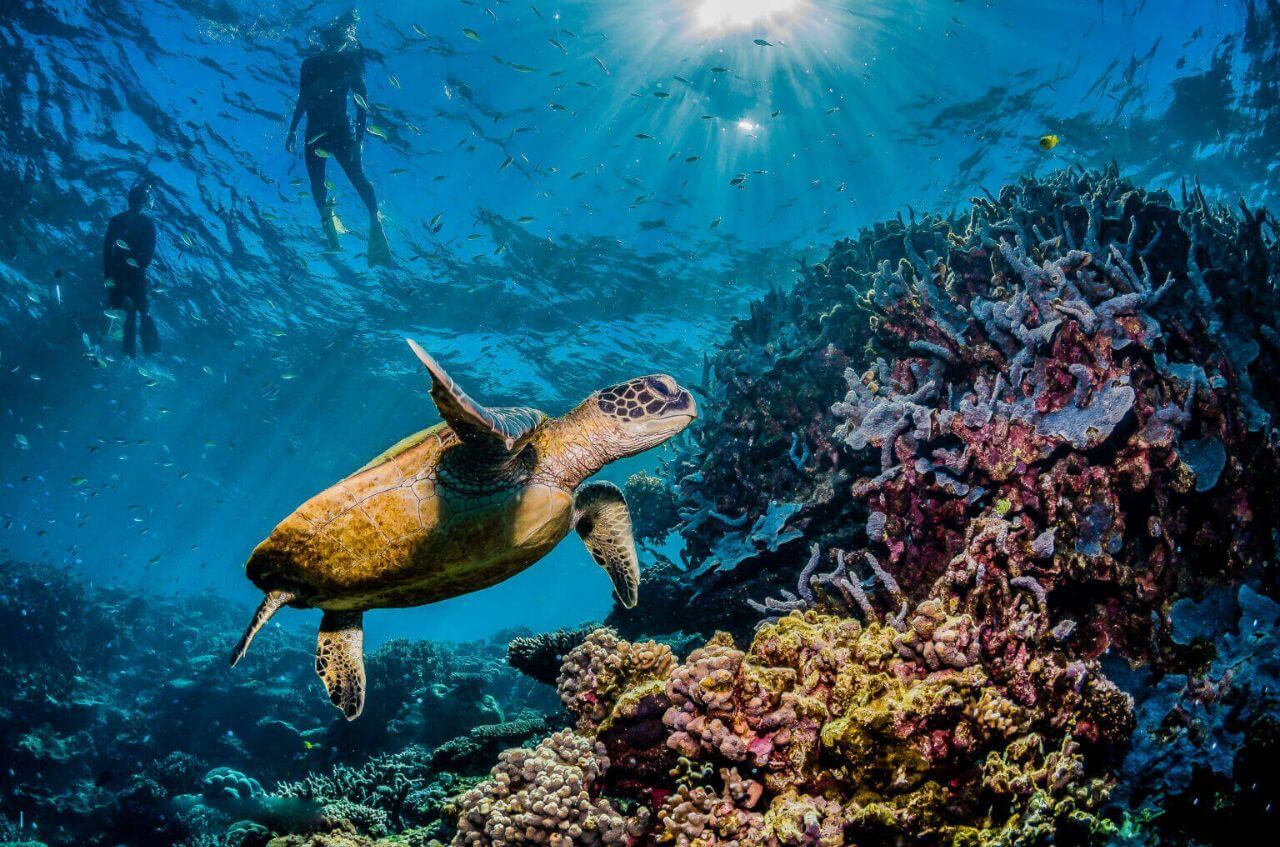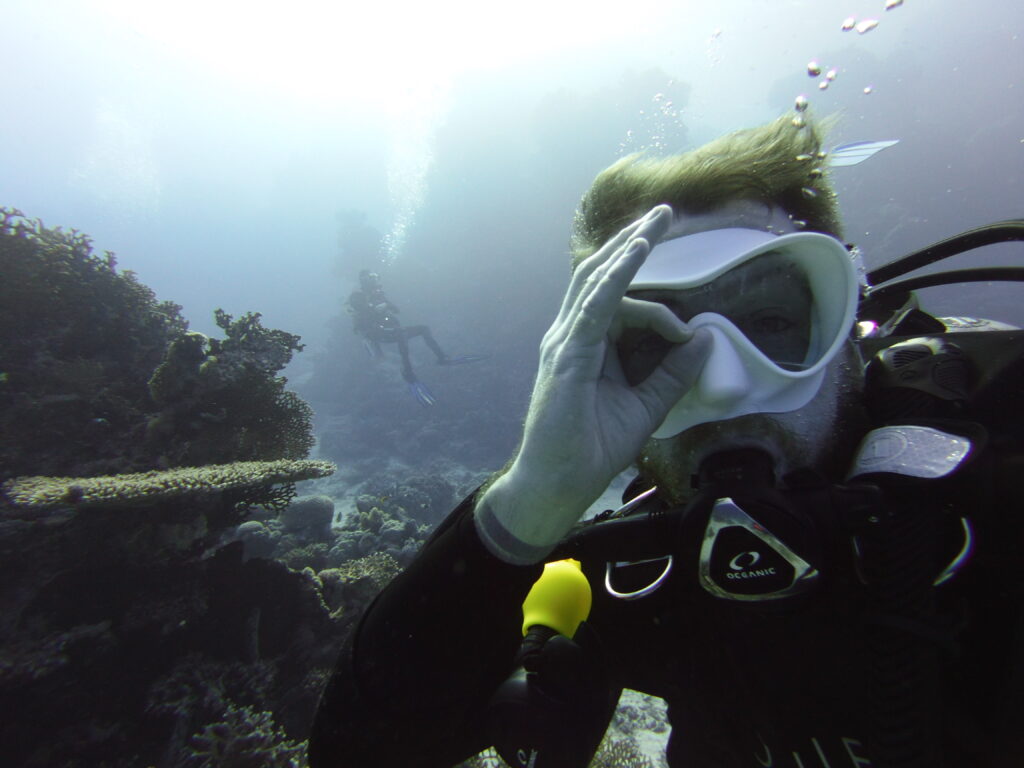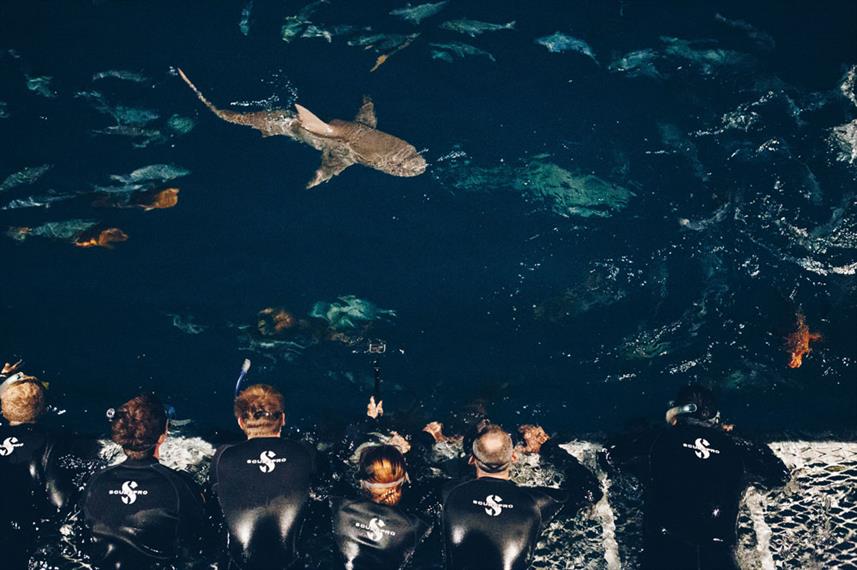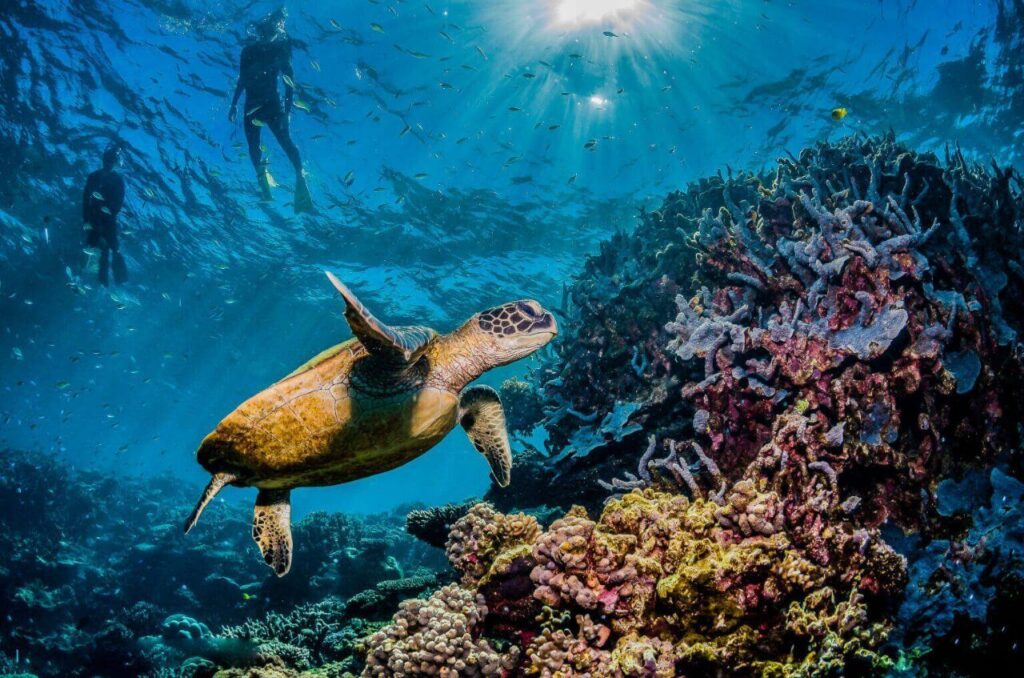
Scuba Diving the Great Barrier Reef is one of the most unique experiences known to diver.
Being the world’s largest coral reef system – one that stretches for over 2,300km (1,400 miles) – an area so huge it can be seen from space, it is home to an insane variety of marine life from sharks, turtles, whales and manta rays to reef fish, macro life, seahorses and cephalopods. Crikey!
With superb coral reef, insane visibility up to 60m, one of the best shipwrecks in the world and beginner friendly conditions as well as a few more challenging dive sites – there is something here for everyone.
Yet, this can make it difficult to categorise the major diving regions of the Great Barrier Reef – which areas are known for what kind of marine life, underwater conditions and how do you access them?
Some regions are much harder to reach than others, making the travel logistics harder, but the underwater sites more pristine and rewarding.
In this whale shark of an article I’ll be guiding you through the major dive regions of the Great Barrier Reef.
I’ll also cover options for how to dive here and all the other travel logistics you need to consider like when to go, how to get there and the types of dive safari available. Let’s do this!
CONTENT:
Diving Regions of the Great Barrier Reef
#1 Outer Great Barrier Reef
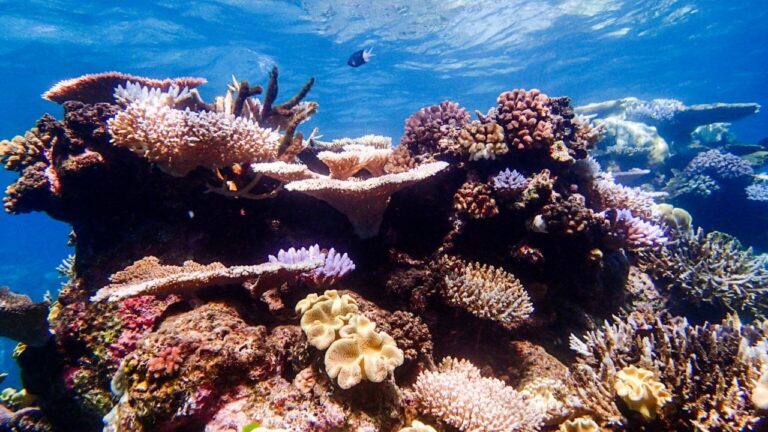
- Easiest to reach
- Can be explored on a day trip = accessible to dive resorts and liveaboards
- 15 – 25 meter visibility
- Many dive sites that are beginner friendly
- The most frequently visited area of the Great Barrier Reef
The Outer Great Barrier Reef refers to the part that is located around the central region of the entire Great Barrier Reef, some 60km from the shore of Cairns. It can be reached within 90 minutes by most high speed boats and subsequently is accessible by both liveaboards and from dive resorts. More divers go here than any other region of the Great Barrier Reef.
With many shallow dive sites that are lacking in currents, this is an excellent region for beginners and indeed more people complete their open water certification here than nearly anywhere else in the world, besides Koh Tao.
The underwater topography itself very interesting and varied, with the outer great barrier reef being comprised of a never ending assortment of hard coral pinnacles, caverns, and ledges to explore; these are home to many reef fish, reef sharks, turtles and sessile marine life.
In deeper waters, one will encounter pelagic fish like Maori Wrasse, Jacks, Barracuda and Trevally as well as the chance to also spot whale sharks and manta rays during the colder months.
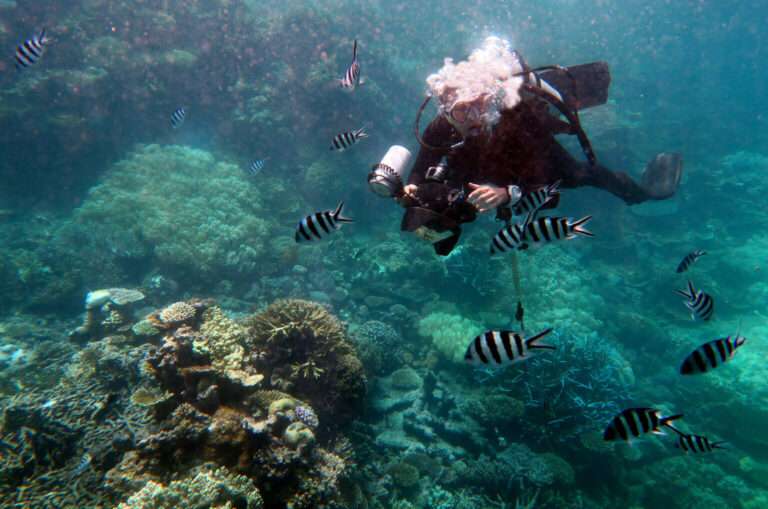
The Outer Great Barrier Reef grows from the ocean floor up, rather than from a land base. The upside of this, is that it means there is a lot of open space to swim around in and a good mix of reef life and larger pelagics to be enouuntered.
Some of the favourite diving areas of the outer great barrier reef include Thetford Reef, Moore Reef, Flynn Reef, Hastings Reef, Norman Reef and at the far outskirts, the legendary Pellowe Reef.
There’s a number of liveaboards that explore these favourite regions of the outer great barrier reef including Rum Runner, which offers short and action packed trips lasting just 1 – 2 days and Ocean Quest, which offers fluro night dives and is also the cheapest option!
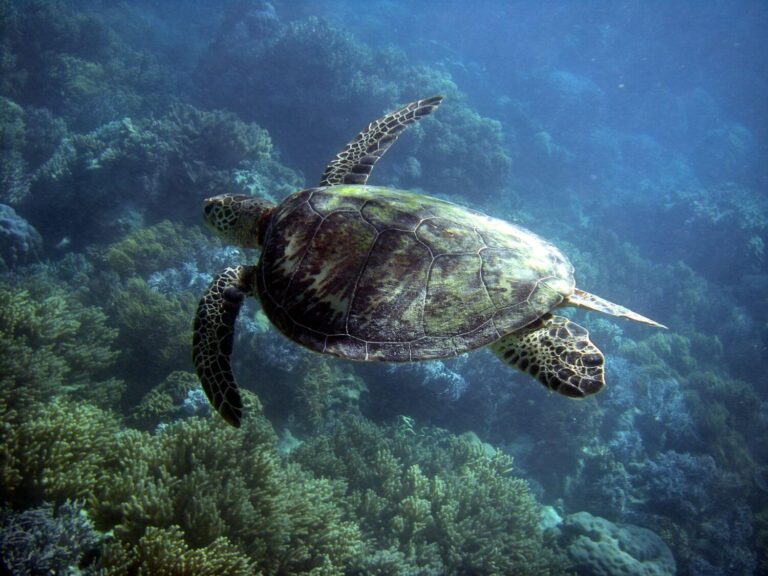
2) Ribbon Reefs
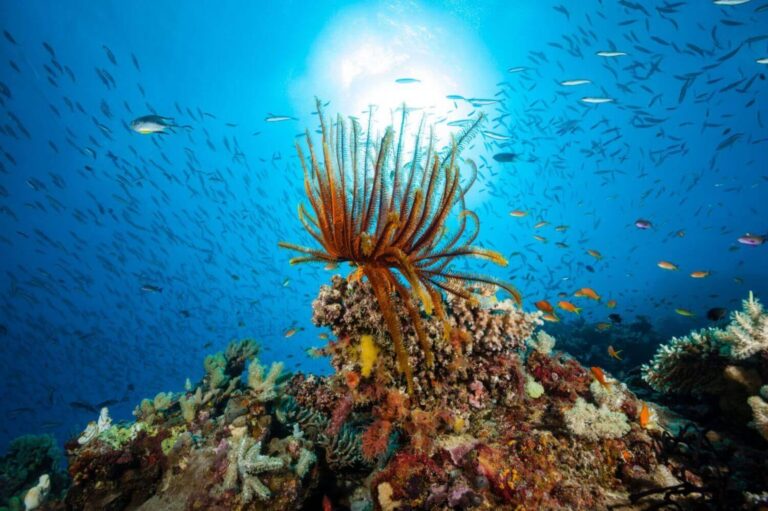
- Can only be reached via liveaboard
- Starts 50k north of “outer great barrier reef” and continues north for another 50km.
The Ribbon Reefs are a series of long and thin stretches of coral reef, located further north from the Outer Great Barrier Reef, being some 50-100km further north than the region referred to by divers as the outer great barrier reef.
Due to their greater distance from the city of Cairns, these reefs are both more pristine and generally only accessed by liveaboard.
Generally speaking, the ribbon reefs are no more than 450m wide and tend to be fairly shallow; reaching as high as to 5m below the water’s surface. Consequently, many of these dive sites are also beginner friendly, especially as currents are not very strong at many of them.
The marine biodiversity to be found here is extremely impressive, more so than that of the outer reef region further down south. In addition to many reef fish and various interesting macro critters around the colourful hard corals, one can also encounter a great deal of large pelagic ish including Sweetlips, Coral Trout and Triggerfish.
There’s also turtles, reef sharks, manta rays and whale sharks during the colder months and cetaceans including minke whales! Several liveaboards such as Spoilsport and Spirit of Freedom actually offer special minke whale themed diving expeditions! (Side Note: There’s also some kickass whale watching expeditions in Sydney which isn’t too far away!).
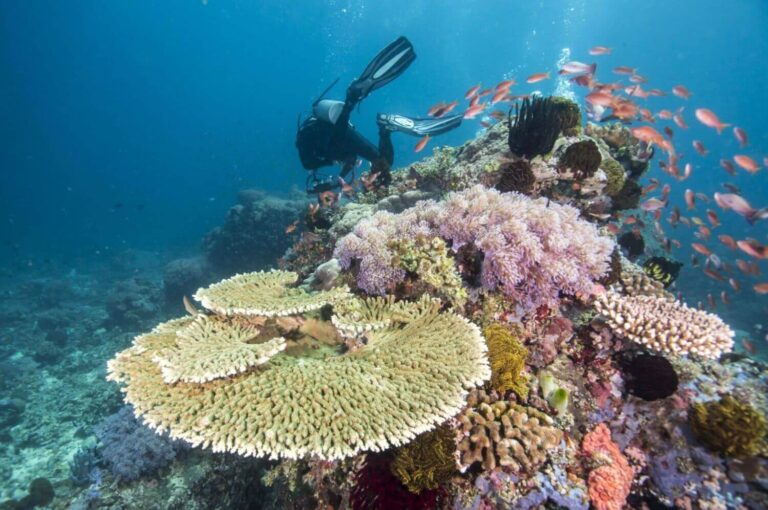
Generally, divers characterise the ribbon reef into 10 separate reefs, which not too surprisingly are numbered ribbon reefs #1 through to #10 – there are many fantastic dive sites around each.
An all time favourite dive site, located at ribbon reef #10 is Cod Hole, which is world famous for the numerous and friendly Potato Cod that divers will encounter here! These Potato Cod reach truly vast proportions due to having been fed by divers for over two decades.
They’ll expect no less from you and subsequently don’t be surprised if for the entire duration of your dive, you are encountered by several of these mighty yet harmless fish.
Because the Ribbon Reefs are too far from the dive resorts of Cairns to be accessed by them, it is mostly liveaboard divers who come here. However, 10km north of Ribbon lies Lizard Island, which in addition to being the location of many great additional dives, including superb macro dives has a dive resort from which you can access the upper ribbon reefs.
That said, the best way to fully explore the dive sites around all ten of the ribbon reefs is undoubtedly with liveaboard.
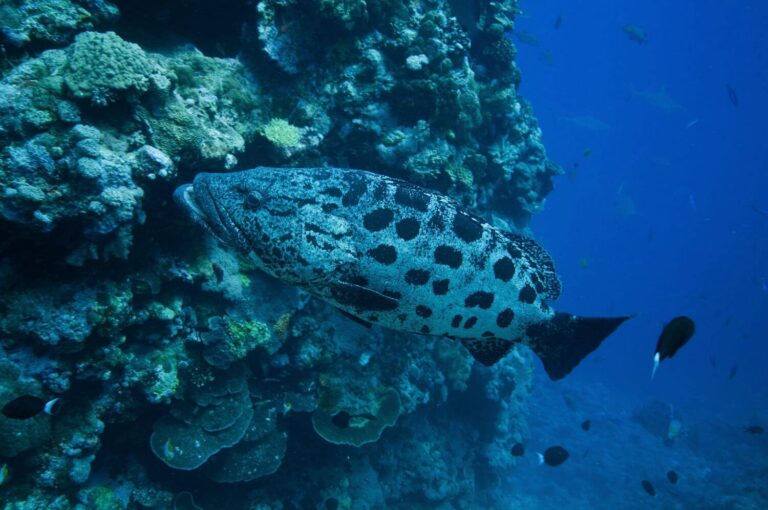
3) Far North: Osprey Reef & Yongala Wreck
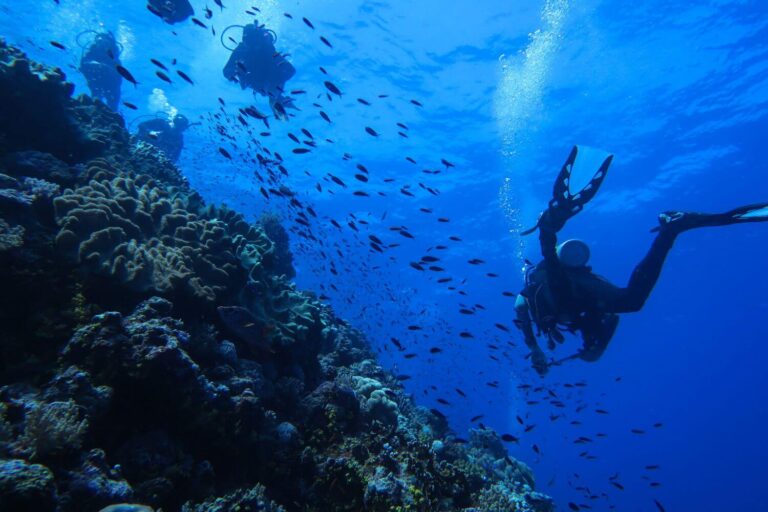
- The most seldom visited diving areas of the Great Barrier Reef
- Yongala Wreck is widely considered to be one of the best wreck dives in the world.
Located some 350km from Cairns, Osprey Reef is the most northerly of the Coral Sea Reefs. It is a submerged atoll, separated from the continental shelf by a deep water trough. Most dive sites here are defined by vertical walls rising from the deep, covered in a mish mash of many soft coral species that comprise a dazzling array of colours.
The marine biodiversity here is genuinly incredible, with the most defining characteristic of this area, being the large pelagic fish species such as sailfish, marlin and whale sharks…as well as numerous sharks including grey reef, silky, silver tip and even hammerhead sharks.
That said, amidst the reef, one can still spot many smaller animals like countless reef fish, olive sea snakes, pipefish, scorpionfish and gobies. There’s also green and loggerhead turtles as well as a good chance of spotting eagle rays and even manta rays.
This area is generally regarded as one of the very best diving destinations in Australia due to both the superb visibility, pristine coral reef and many large pelagic species found here.
Osprey Reef, is without a doubt among the all time most off the beaten track dive destinations of the Great Barrier Reef. Only a few liveaboards venture this far, namely: Spoilsport and Spirit of Freedom. Whilst this does mean places can be limited, the plus side is you won’t have to share your dive sites with many, if any other divers.
An all time favourite dive site of Osprey Reef and certainly the best area for witnessing huge numbers of sharks all at once is North Horn.
The most common sharks here are silver tip and grey sharks, but all of the previously mentioned species can also be seen and it’s common practice to organise special shark feeding dives for those prepared to experience the ultimate adrenaline rush.
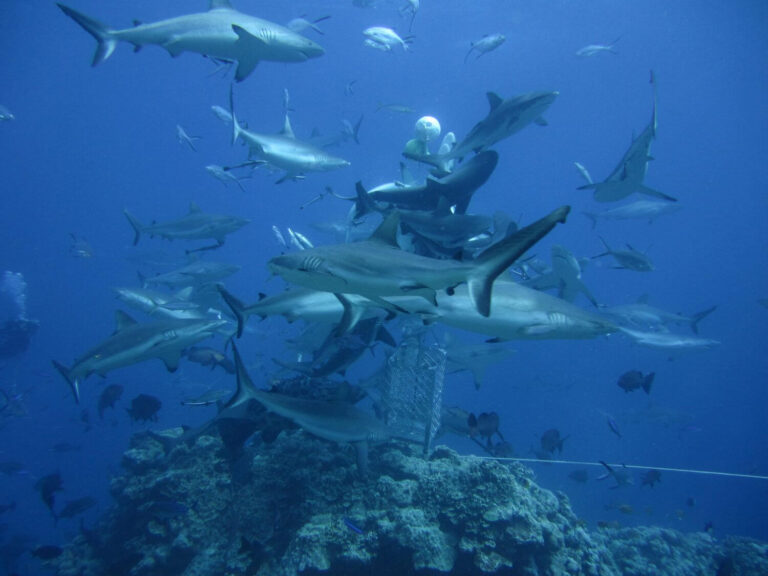
Another far northern dive site of the Great Barrier Reef is the legendary Yongala Wreck – a 110m long former freight steamer that sank in 1911 along with all 124 of it’s passengers during a tropical cyclone.
Only discovered in 1958, the Yongala Wreck is now widely considered to be one of the hands down best wreck dives in the world. Lying on a 33 meter deep sandy bottom; this mighty shipwreck is in excellent condition, although it’s illegal to actually swim inside due to the fact that all of it’s passengers perished, making it a gravesite.
However, the main reason for diving here is to observe the insane variety of exciting marine life cursing around the outside of the wreck. One can spot giant groupers that are literally the size of a small car, vast schools of barracuda, manta and eagle rays, numerous sea turtles, sea snakes, reef sharks and may even glimpse bull sharks and tiger sharks.
It’s even possible to glimpse bottlenose dolphins, whale sharks and brydes whales! Truly, Yongala Wreck is a pelagic lovers paradise and few dive sites, wreck or not can boast such an insane and consistent variety of large marine animals.
There’s also many thousands of reef fish making their homes amidst the colourful hard corals, soft corals, gorgonian fans and sponges that colourfully adorn the outside of the wreck.
Do note that this is one of the few Great Barrier Reef dive sites that’s mainly suited for more experienced divers due to the poor visibility and strong currents usually found here. For those up to the challenge though, the rewards are well worth it – if you really want to dive on the edge, it’s even possible to arrange a special night dive around the Yongala Wreck for a jaw dropping, albeit somewhat spooky experience.
Generally speaking, you can only visit the Yongala Wreck with those same liveaboards that venture to Osprey Reef, Spoilsport and Spirit of Freedom.
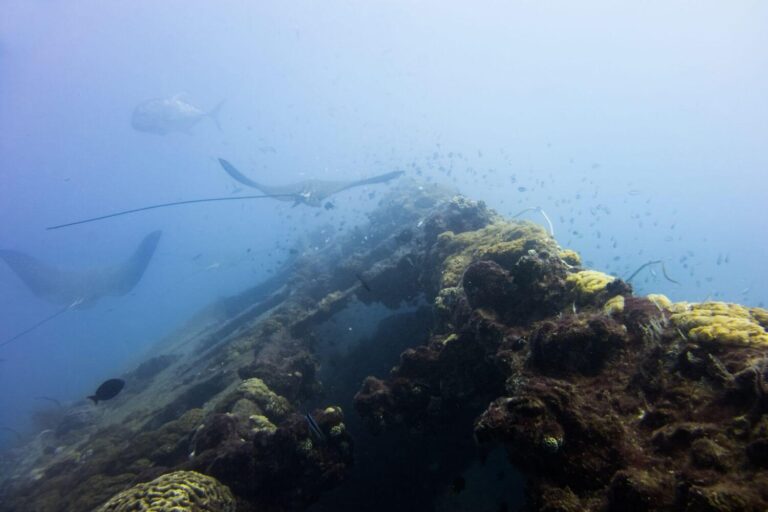
How to go Scuba Diving at the Great Barrier Reef
Option 1 – Liveaboard:
This is where you live…. aboard…a boat specially outfitted for scuba diving, aka a liveaboard, for anywhere from a few days to several weeks, whilst being toured around the best and most hard to access dive sites in the region; many of which can only be reached in this way – including Ribbon Reefs and the Far Northern Dive Sites like Osprey Reef and Yongala Wreck. The boat’s crew will include dive guides, naturalists and chefs.
Liveaboards vary a lot! Some are more like backpacker hostels on water with basic amenities and dorm style accommodation – they can be very affordable indeed especially with the price of meals also being included. Other liveaboards are huge vessels with lavish features like luxury cabins, spas and jet skis.
Furthermore, whereas some liveaboards are more suitable for beginners – by visiting easier dive sites and allowing guests to undergo scuba diving courses throughout the trip; other liveaboards are tailored towards advanced divers by requiring a minimum number of logged courses and scuba certification level for all guests. In addition to visiting the all round best dive sites, these vessels will also incorporate more challenging dive sites into their itineraries.
When it comes to choosing a Great Barrier Reef liveaboard, not only are there a lot of options; their is insane variation amongst them in terms of the dive itinerary, type of diver they are designed for, boat facilities, extra activities, cost, etc. So, how the hell do you choose the best option for you? Easy. Check out Diving Squad’s brutally honest Reviews of the Best Great Barrier Reef Liveaboards.
Honestly, I feel that the best way to dive the Great Barrier Reef is via a liveaboard. There’s several reasons for this: firstly, you will get to experience a much wider variety of dive sites then you would if you were diving from a dive resort; due to the fact that you’re not limited to the dive sites that can be reached from Cairns in less than half a day. The best and most off the beaten track dive sites can only be reached via liveaboard!
Secondly, your time spent travelling between dive sites will be aboard a larger and more comfortable vessel than any you’d travel on from a dive resort. We’re talking vessels with their own bars here, TV entertainment rooms – luxury cabins. You name it!
Thirdly, you can choose a very specific kind of adventure – whether you want to go on a liveaboard experienced that just lasts a couple of days or embark upon a diving adventure for over a week – pair up with other novice divers or rub shoulders with seasoned pros, it’s all possible. Check out the article on Great Barrier Reef liveaboards for more info!
Many liveaboards are surprisingly affordable and because they include the cost of meals and accommodation, you will actually end up spending less money then you would at many dive resorts. Furthermore, a considerable amount of liveaboards only require you to have your open water certification, making them beginner friendly – such as the liveaboards Ocean Quest and Coral Sea Dreaming.
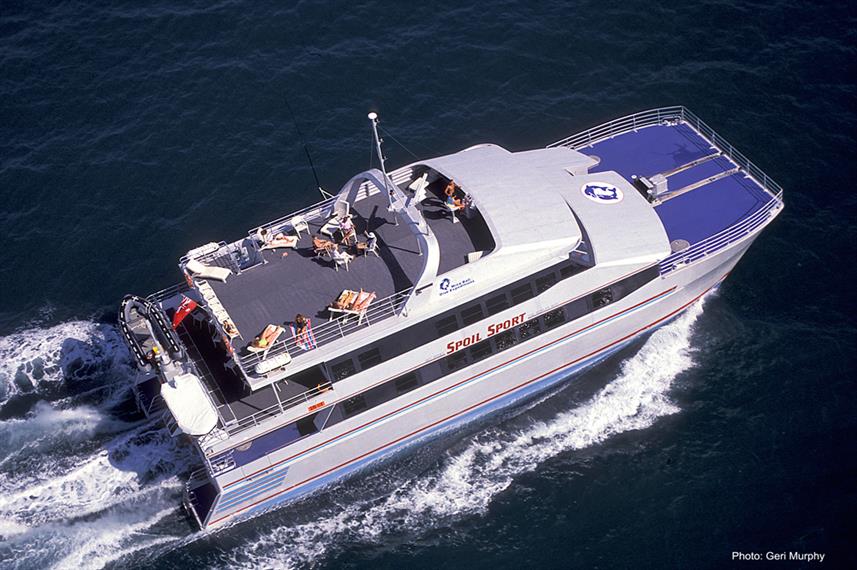
Option 2 – Diving Resort:
If for whatever reason a diving liveaboard just doesn’t sound like you’re thing, then you can always opt to go with one of the diving resorts at Cairns. With this option, each day that you dive you’ll be taken out to dive the sites around the inner and Outer Great Barrier Reef on a day trip.
I say day trip, but you won’t spend all day travelling to the dive sites -normally it’s a couple of hours travel each way (from Cairns to the dive sites), with the rest of the day being spent diving. From a dive resort, you can make it as far as the Outer Great Barrier Reef, which does have some great dive sites – but you won’t be able to get to the Ribbon Reefs and far north dive sites like Osprey Reef and Yongala Wreck, which can only be accessed via liveaboard.
Of course, one advantage of a diving resort is that you have the option to pace out your dives – you could spend one day diving and the next sipping cocktails by the pool, exploring Cairns or making other land excursions further out back into the surrounding bush – it’s all up to you. There is no limit whatsoever on how long you dive from a dive resort.
Some people do just prefer the dive resort option and of course if you have the money to splash out on a truly expensive one, you do have the option for the ultimate luxury experience. It may also be a better shout for those prone to sea sickness as you won’t be marooned on a boat the entire time!
Finally, whereas most liveaboards are suitable for anyone with their open water certification, if you still don’t have this qualification and you don’t want to pay a private dive guide on a liveaboard to teach it to you, then a resort is your only option – where you can take your open water course as part of a group.
With this in mind, you can take a look at the Best Dive Resorts in Cairns.
Best Time to Dive the Great Barrier Reef
Awesome news – you can scuba dive the Great Barrier Reef all year round! That said, the kind of diving experience you have will vary depending on what time of year you dive at the Great Barrier Reef. Why? Mainly because of seasonal marine life activity but also due to some variance in water conditions throughout the year.
Many scuba divers consider the very best time to dive the Great Barrier Reef to be from August – December as these are the months with the greatest water visibility and the least wind and rain.
However, it may be that you are more interested in certain marine life than water conditions in which case you should be aware that:
- Manta rays and hammerheads visit the Coral Sea from April to September.
- Minke Whales make an appearance during June and July.
Keep reading to find out more:
June – August: Hot 70-80 degree Fahrenheit days, clear waters and cool evenings define Australia’s dry season. Temperatures are a little cooler during this period, due to the fact that it’s winter in the southern hemisphere, however they rarely drop below 60 degrees. With water temperatures at 22 degrees celcius, you’ll most likely want a wetsuit.
This period is diving high season, so be sure to book your liveaboard or diving resort in advance! From June and July is also when divers have the best chance of spotting Minke and Humpback Whales!
September – December: Winds drop, resulting in calmer water conditions, which makes these months an excellent time to dive for beginners. September – December is also great for spotting turtles as in Australia, they tend to breed and nest between October – November.
In November, the reef comes alive with decorator crabs, slipper lobsters and palao worms. Many fish breed in December, so keep an eye out for eggs as well as aggressive Titan Triggerfsh! You probably won’t need a wetsuit during these warmer months.
January – February: These are the hottest months for diving the Great Barrier Reef, with temperatures rising up to 85 degrees Fahrenheit. January – February also mark the monsoon period, with possible torrential downpours of rain.
March – May: March marks the start of stinging jellyfish season so you’ll need a stinger suit (many liveaboards and diving resorts will arrange this for you).
Although water temperature are still cool around March (about 28 degrees celcius), it does drop over april and may, meaning you’ll probably need a wetsuit. That said, March is when baby turtles hatch, which attracts many sharks!
Can Beginners Dive the Great Barrier Reef?
Yes! The Great Barrier Reef is actually a superb location for those new to the epic world of scuba diving. This is due to the shallow water conditions and gentle to non existent currents of the vast majority of Great Barrier Reef scuba diving sites.
If you have never scuba dived before, then you can easily take your open water cert at a resort – or a much shorter version of it with the Coral Sea Dreaming liveaboard, which is suitable for those who have never scuba dived before and includes a free 10 minute introductory dive course for first timers.
Many other Great Barrier Reef liveaboards are suitable for those with just their open water cert with a few offering the option to hire a private dive guide to teach you your open water cert.
The Great Barrier Reef is certainly one of the most beginner friendly popular dive destinations in the world. The really cool thing about it? Because it’s so massive there are still many pristine and off the beaten track dive sites, which is not the case with other famous beginner friendly dive sites such as Koh Tao.
How to Get There:
This is super easy. All you have to do is get to Cairns; which has it’s own airport that accepts international flights. You can also reach Cairns via Queensland Rail or even to simply drive there (both these latter options assuming you’re already on the continent of Australia!!).
Getting to Cairns is all that’s required if you opt for a liveaboard, because liveaboards will happily arrange your transfer from Cairns to the departure point – simply ask them for help upon booking.
If you are choosing a dive resort, most can also arrange your transfer from Cairns airport to the resort – or if you wanna do it under your steam, simply step outside and shout “Taxi”!
Or if you’re looking to go there more long term, check out this guide on emigrating to Australia!
Great Barrier Reef Diving Prices
Generally speaking, if you go with a diving liveaboard; you can expect to pay anywhere from 217 – 397 AUD for a day of 3- 5 dives, which also includes food and accommodation, with the average price topping out at around 220 AUD.
If you go with a diving resort, it’s usually 100 – 200 AUD for an introductory dive, depending on where in the reef you go or about 200 AUD for standard dives. Booking a dive package is much more cost effective if you opt for a dive resort.
You can get much more more bang for your buck by going with a liveaboard, as there ls little difference in the price, and yet you get to do more dives in a day and have food and lodging also paid for in the fee!
Great Barrier Reef Diving Squad DEBRIEFING:
Bada-bing-bada-splash. You did it! You did the thing. And by thing, I mean you powered through this entire article, empowering yourself with all the knowledge you need to know in order to dive the Great Barrier Reef in style.
You know the different regions that this awe inspiring reef has to offer, you know the options for diving there, you know the logistics like when to go, how to get there, what to spend.
Planning a dive holiday is no easy feat; yet it should always be done properly, in order to get the absolute best kick out of your scuba odyssey. And now you do. Take pride in that.
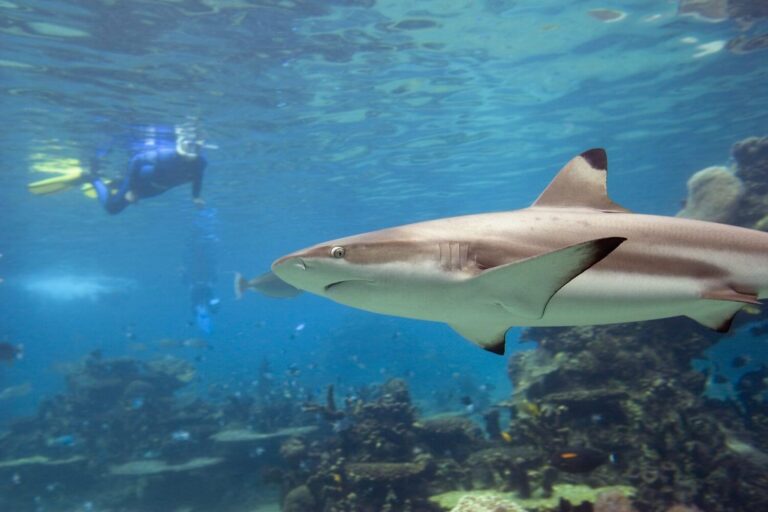
Support the Squad!
Some of the links in our content are affiliate links. This means that if you buy a product, book a liveaboard, book accommodation or purchase insurance, we earn a small commission at no extra cost to you. Thanks!
